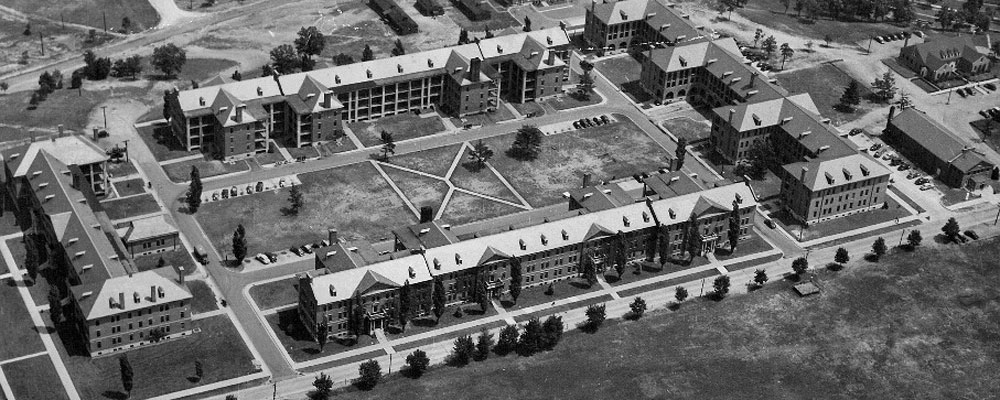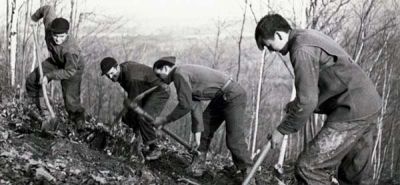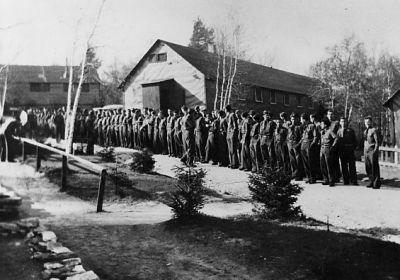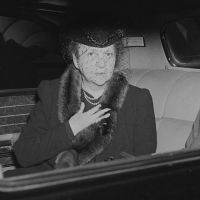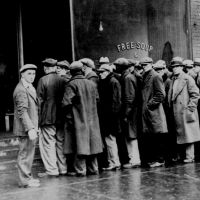Primary Source
Harold Frame, a supervisor at Myles Standish State Forest, recalled his early CCC experience:
I have been used to the out-of-doors all my life, but I shall never forget the feeling of complete isolation that came to me the first night I slept in a CCC camp. There were no lights and one must sit on his bunk, and be ready to go to sleep when darkness came. Meals were out in the open, even in pouring rain. Wetness and dryness depended wholly on the weather. There were no chairs to sit on, and so, unless you could go to your bunk, you must stand the ground not being attractive for sitting.
Never could anybody be so close to nature. They put these camps mostly in the wildest places, for it is usually in such spots that the forest can be most improved I often thought how several centuries ago the Pilgrims had settled this very land and how they faced close contact with the elements. Like all pioneers, we were on virgin territory, and we had to "hew an empire from the wilderness." And that is no exaggeration either; fir it must be understood that these hardships are now largely past tense.
With hard work, and plenty of it, an apparently miraculous change has taken place in the part of the pine woods here where we live. First we had to clear away the brush and stubble in order to walk around a bit, then roads were built to permit access for trucks, later a telephone line was constructed then later - much later, barracks instead of tents, a dining hall, and then finally - the crowning achievement -- five miles of power line for electric lights. From something that was really nothing but land in the raw we have built a reasonably civilized community and each day and each week as it goes by we enlarge the periphery of our civilizing process; making it possible for more and more use to be made of this area of Gods' earth.
Quoted in Civilian Conservation Corps: Shaping the Forests and Parks of Massachusetts - A Statewide Survey of Civilian Conservation Corps Resources, by Shary Page Berg, (Massachusetts Department of Environmental Management, 2001).


